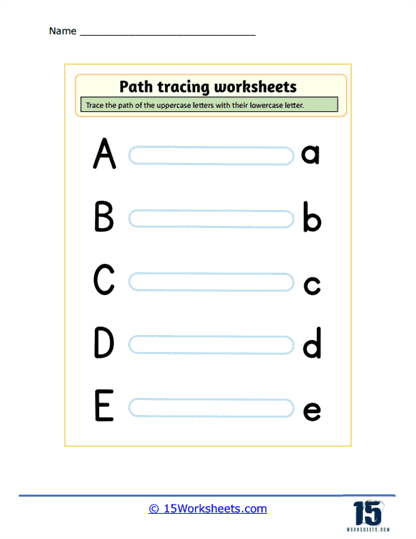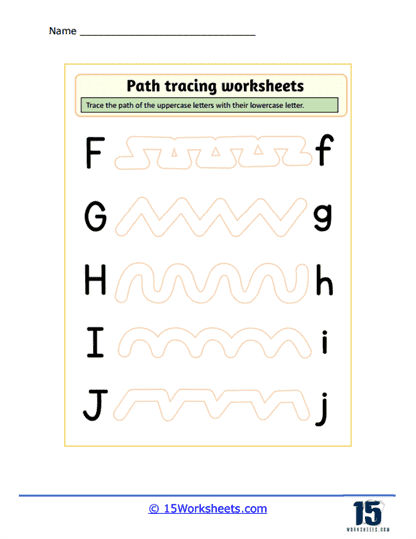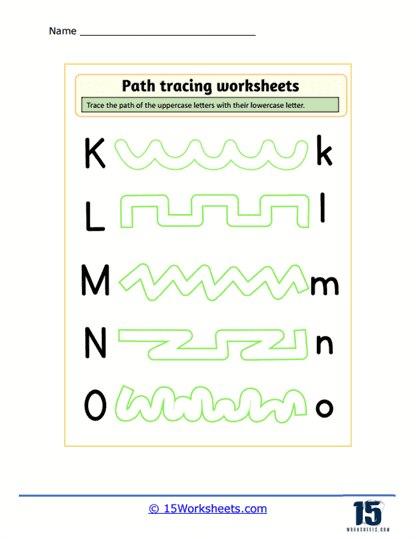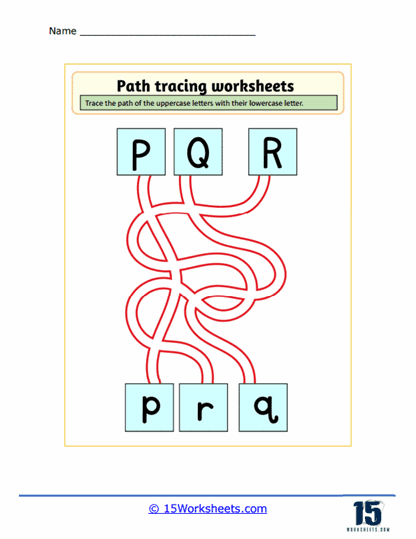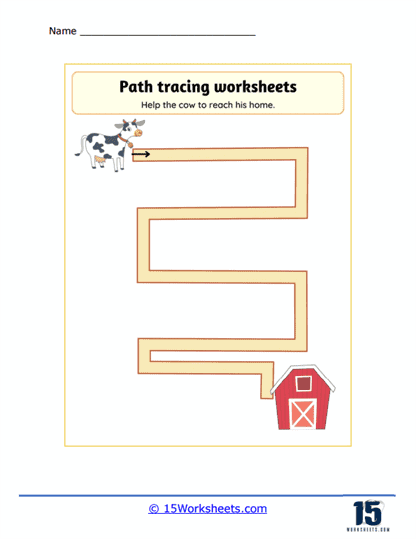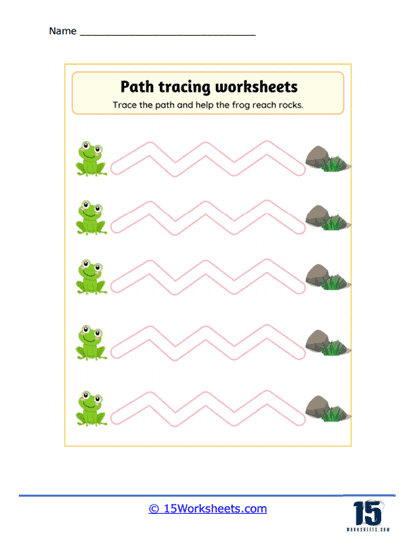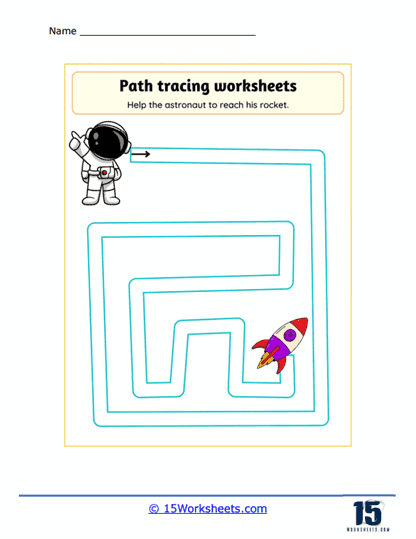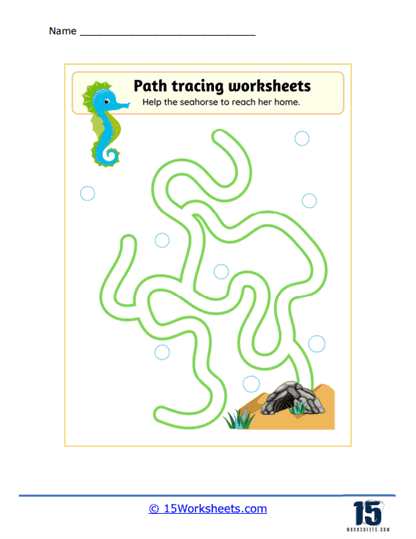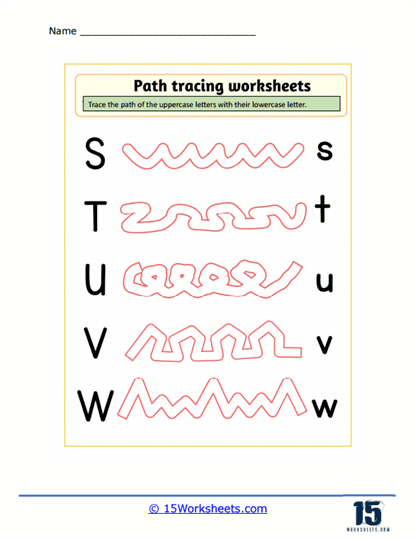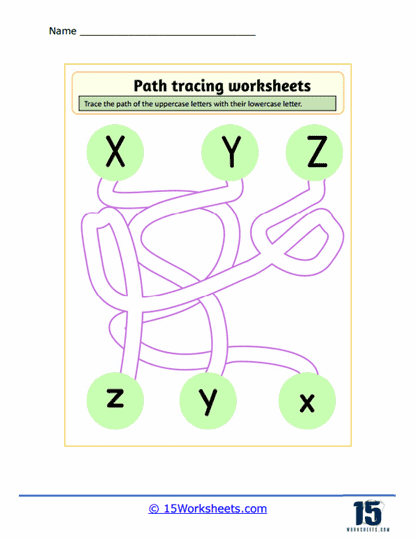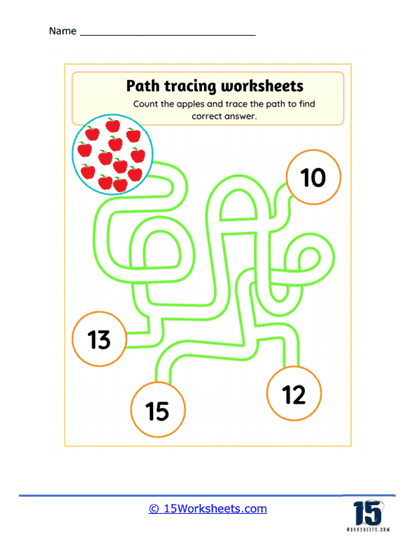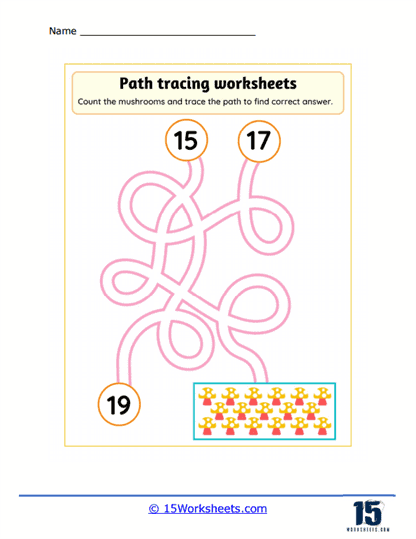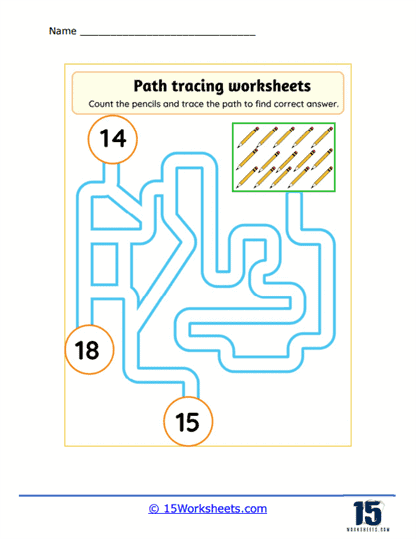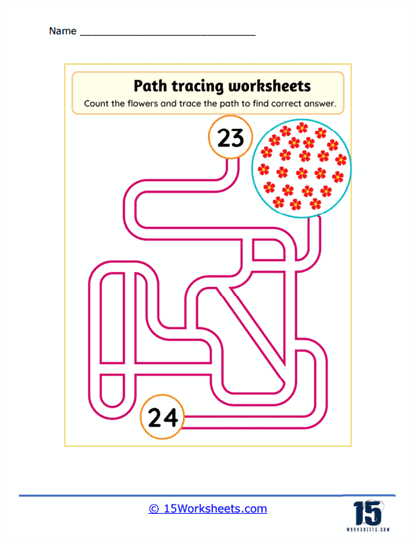Path Tracing Worksheets
About These 15 Worksheets
This series of worksheets involve following and tracing lines or paths with a writing utensil, such as a pencil or pen. These worksheets are designed to help students develop their fine motor skills, hand-eye coordination, and spatial awareness. These worksheets help students build up to completing physical paper and pencil mazes.
The primary purpose of the worksheets is to provide an engaging and interactive activity that allows students to practice and refine their tracing abilities. By tracing along the designated path, students improve their control over their hand movements and develop the coordination necessary for precise writing and drawing.
These worksheets consist of various types of paths, such as straight lines, curves, zigzag lines, or complex patterns. The paths may be designed in different shapes or themes, such as mazes, roads, or thematic objects, depending on the context or purpose of the worksheet. Students must follow the path accurately, adjusting their hand movements to stay within the designated lines. This promotes the ability to coordinate hand movements with visual cues and develop a better understanding of spatial relationships.
While Tracing the Path Worksheets are typically used in earlier stages of learning, they can still benefit older students by reinforcing fine motor skills and hand-eye coordination. Additionally, tracing activities can be adapted to be more challenging by including more complex paths or intricate patterns, which can engage and challenge learners.
What Are The Benefits?
Completing mazes is a fun and engaging activity that offers various benefits for students’ cognitive, motor, and problem-solving skills. Here are some ways that completing mazes helps students:
Problem-solving Skills
Mazes require students to analyze, plan, and execute a strategy to navigate from the starting point to the end. This process helps develop problem-solving skills, which are essential for academic success and daily life.
Spatial Awareness
Navigating through a maze helps students develop spatial awareness, as they must understand the relationships between the different paths, obstacles, and spaces within the maze. Spatial awareness is important for various tasks, such as reading maps, estimating distances, and organizing objects.
Fine Motor Skills
While completing mazes, students must use pencils, pens, or their fingers to trace the path, which helps develop fine motor skills. These skills are necessary for tasks like writing, drawing, and manipulating small objects.
Hand-eye Coordination
Tracing the path through a maze requires students to use their hands and eyes in a coordinated manner, which improves hand-eye coordination. This skill is essential for various activities, including sports, reading, and writing.
Focus and Concentration
Mazes require sustained attention and focus to reach the end successfully. Completing mazes helps students develop their concentration and persistence, which are important for academic success.
Memory and Cognitive Flexibility
Mazes challenge students to remember previous paths they have taken and adapt their strategies if they reach a dead-end. This helps improve memory and cognitive flexibility, which are essential for learning and adapting to new situations.
Visual Scanning and Tracking
Completing mazes involves visually scanning and tracking the paths to find the correct route. These skills are important for reading and various other tasks that require visual attention.
Perseverance and Resilience
Mazes can be challenging, and students may encounter dead-ends or make mistakes. Learning to persevere and keep trying until they find the correct path helps develop resilience, a valuable life skill.
Building Confidence and Self-esteem
Successfully completing a maze can give students a sense of accomplishment, which boosts their confidence and self-esteem.
Fun and Engaging
Mazes are enjoyable and engaging, making them a great way to incorporate learning and skill development into a fun activity.
By incorporating maze activities into your students’ learning, you can help them develop essential skills while keeping them engaged and motivated. Mazes can be easily adapted to different skill levels and topics, making them a versatile tool for teaching and learning.

